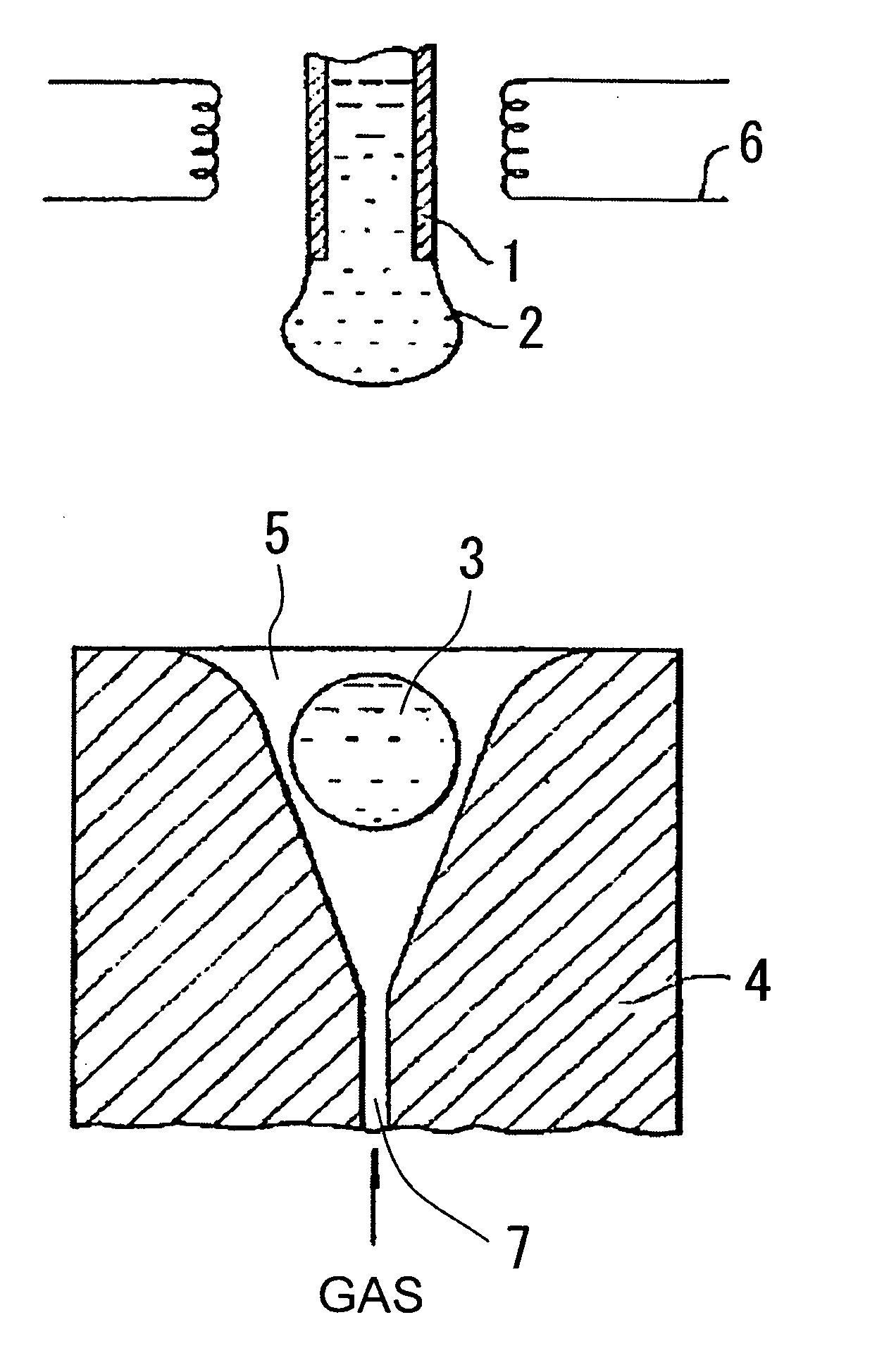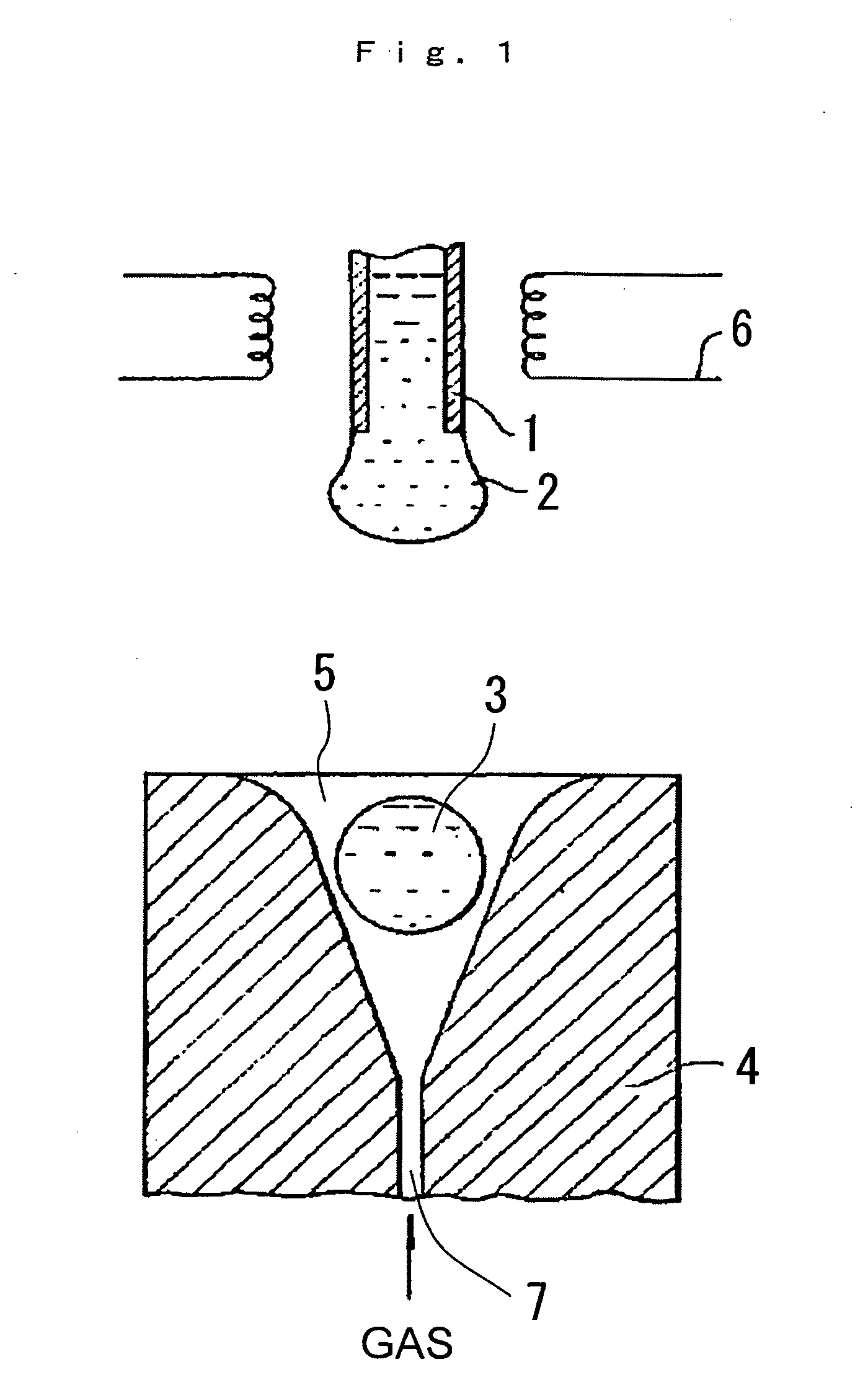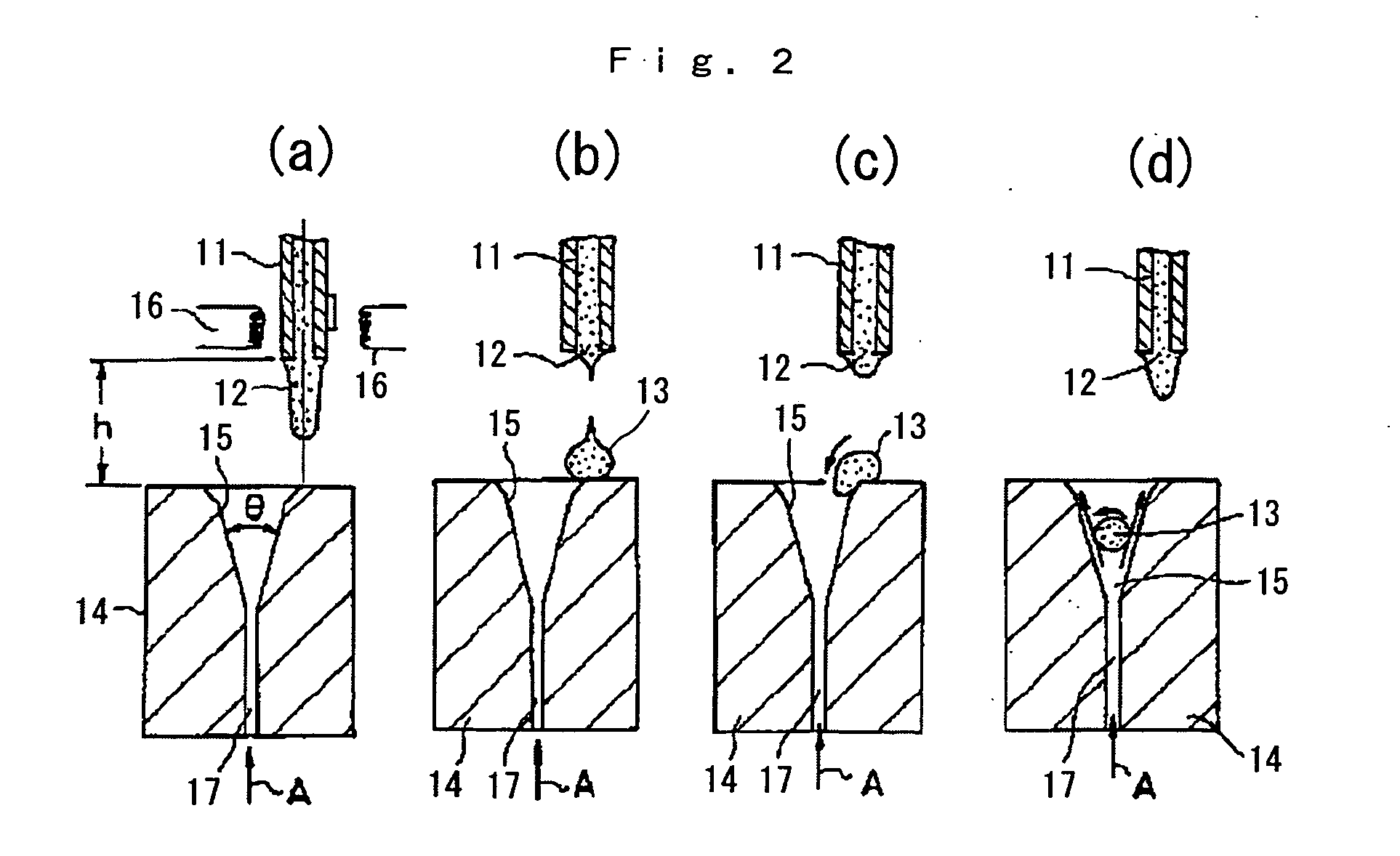Method of manufacturing precision glass spheres and method of manufacturing optical glass elements
a technology of optical glass elements and precision glass spheres, which is applied in the manufacture of tools, sports equipment, skating, etc., can solve the problems of large amount of waste product (glass shavings), large amount of material consumed in processing, and time-consuming processing
- Summary
- Abstract
- Description
- Claims
- Application Information
AI Technical Summary
Benefits of technology
Problems solved by technology
Method used
Image
Examples
embodiment 1
[0079] Precision glass spheres for use in precision press molding were manufactured from lanthanum borate (B2O3—La2O5) glass A (glass components: 21 weight percent B2O3, 35 weight percent La2O5; refractive index 1.80 nd; ν d 40). First, the starting materials of the above glass were melted, vitrified, clarified, homogenized, and solidified to manufacture cullets of precisely controlled refractive index. A suitable quantity of cullets was remelted in a glass melting vat, caused to flow out, dripped, and formed.
[0080] The device shown in FIG. 1 was employed in the manufacturing of the crude glass spheres. An examination of the dripped and formed crude glass spheres following cooling revealed striae within 90 micrometers of the surface. Because lanthanum borate glass was employed, these were attributed to marked volatilization from the glass surface during dripping and forming. Continuous and stable forming under conditions capable of suppressing surface striae was not readily achieve...
PUM
| Property | Measurement | Unit |
|---|---|---|
| Length | aaaaa | aaaaa |
| Length | aaaaa | aaaaa |
| Viscosity | aaaaa | aaaaa |
Abstract
Description
Claims
Application Information
 Login to View More
Login to View More - R&D
- Intellectual Property
- Life Sciences
- Materials
- Tech Scout
- Unparalleled Data Quality
- Higher Quality Content
- 60% Fewer Hallucinations
Browse by: Latest US Patents, China's latest patents, Technical Efficacy Thesaurus, Application Domain, Technology Topic, Popular Technical Reports.
© 2025 PatSnap. All rights reserved.Legal|Privacy policy|Modern Slavery Act Transparency Statement|Sitemap|About US| Contact US: help@patsnap.com



